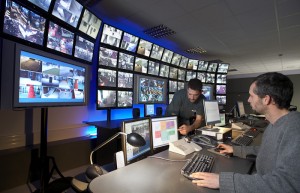By Bob Gourley
 piXlogic is widely known in the DoD and intelligence community for its ability to provide visual search solutions that automatically analyze and index the contents of images and video files, providing unparalleled levels of search functionality. They are also widely known in commercial industry, winning awards from such noted journals as KMWorld.
piXlogic is widely known in the DoD and intelligence community for its ability to provide visual search solutions that automatically analyze and index the contents of images and video files, providing unparalleled levels of search functionality. They are also widely known in commercial industry, winning awards from such noted journals as KMWorld.
What kind of things does piXlogic do? They instantly digest video, then automatically create a searchable index of the visual content of the video. This allows both humans and computers to know what was seen by video sources, which can include UAV’s, manned aircraft or even security cameras.
Here is more from their description of their server software capability called piXserve:
piXserve™ is a client/server application that automatically creates a searchable index of the visual contents of media files. piXserve “sees” the contents of digital images and videos, and stores a description of this content in an XML database. Through a web browser interface users can search and retrieve images and video segments that contain visual objects that are the same or similar to those in their query pictures. Through the piXserve UI users can also select specific items in their query image in order to searchjust for those.
In some cases piXserve can “understand” what the item is, and when it does the item is automatically tagged. We call these tags “notions”. A library of notions is included in piXserve, and more are being created all the time. Notions cover a broad range of concepts (for example: flower, car, vegetation, sky, beach, road, map, building, face, bikini, etc.) and allow comparisons to be made over a fairly broad appearance of the item in the image. Users can search for images that contain specific notions or combination of notions.
piXserve is also able to separate out “background” and “foreground” in a still image or individual video frame, and these parameters can be used by a user to better formulate a search query.
piXserve can also read text that may appear in the field of view of the image. Users can type a text string and retrieve images/video sequences where such text appears in the image (for example, text on the screen of a news broadcast, or text on a street sign). piXserve can see and recognize text in complex color images and videos with an unmatched level of accuracy in the industry.
piXserve can also facilitate the process of cataloging digital assets. For example, it can suggest keywords that could pertain to a picture based on the degree of similarity between the contents of that image and those previously indexed by piXserve and for which catalog information is already available. piXserve will help you reduce significantly the cost and time you spend searching and cataloging photos and videos.
Key features:
- Automatic Indexing
Point piXserve to a repository of images and video and automatically index their contents. No manual intervention or data entry required. piXserve “sees” what is in the image and automatically creates records that describe the shape, the position, the size, the color, etc. of the discernable objects in the image. Whatever is in the image is automatically indexed. - Powerful Search
Through a web browser interface, users login to piXserve, connect to available databases and formulate search queries to retrieve images and specific segments of video files:- Use an arbitrary image from user’s dektop to search for images/video segments that contain the same or similar items
- Use the mouse to point to an area of the query image to indicate which specific item(s) should be searched for.
- Browse the contents of existing databases, and use any of those images to formulate a visual search query.
- Search images by “Notion”
- Type a text string to search pictures/videos where that string appears in the field of view
- Perform not only simple but also complex searches (Example: type a text string to retrieve broadcast news segments where that word is visible on the screen, and then use a picture to search those results and retrieve segments where both the text string and the desired visual object(s) are in the same frame. Use AND, OR, and NOT operators to combine up to 6 criteria in a single query.
- Search by file name (any text substring that appears in the full path of the image/video file).
- Search by keyword or other external metadata, if available.
- Suggest keywords to describe the contents of a picture
- Comprehensive Search Environment
Users can prune and save search results for future reference. Search results can be annotated and, as they are stored in XML format, can be easily imported in typical office productivity applications. - Scaleable Architecture
piXserve is a multi-threaded, J2EE scalable application that is suitable for the most demanding implementations. - Web Services API
A REST-based API package is available to support integrations with third party applications and workflow environments.
One of the great experts in applying piXlogic to enterprise mission needs is John Mackay of Cloud Front Group. John has helped enterprises understand piXlogic’s dramatically positive capabilities and is also a master at understanding the many complementary capabilities that piXlogic can work with to form an holistic solution. John is a great starting point for more information on piXlogic. Contact him at http://cloudfrontgroup.com


Leave a Reply
You must be logged in to post a comment.